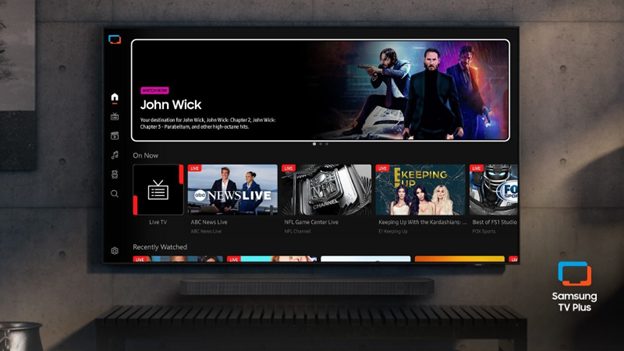Shure offers frequency selection suggestions for broadcasters

While the FCC’s recent white spaces ruling has reassured many wireless microphone users, several key questions remain. In particular, the fate of unscheduled, portable wireless systems such as those used by ENG crews remains somewhat uncertain. To help broadcasters plan for their future needs in this area, we spoke with representatives at Shure, the company that led the charge in ensuring priority for wireless microphones under post-DTV rules.
Shure’s regulatory advocacy for wireless microphones goes back to 1997, when plans for the 700MHz transition were first taking place. The white spaces transition came under discussion in 2002. Shure expanded its role beyond technical commentary nearly four years ago. “It became very clear to us that in order to affect the outcome of the white spaces decision in a favorable way for our industry, it was important to enlist the actual user in the debate,” said Mark Brunner, senior director of public and industry relations for Shure.
“A lot of our power users are often hired or enlisted for major broadcast events, people like James Stoffo and Ed Greene, and Scott Harmala at ATK Audiotek,” Brunner said. “These guys do frequency coordination in critical live situations and were a huge help in motivating the industry.”
With the FCC’s Second Report and Order having been issued, it seems clear that large-scale wireless users will be fairly well-protected from interference under the new rules. A national geolocation database system will help users “reserve” frequency ranges for wireless operation at preplanned events. In addition, licensed users, including broadcast TV, public safety and holders of Part 74 wireless licenses, will be registered permanently. White space devices, formally known as TV band devices, will likely come onto the market in the next 12 to 18 months. They will be required to feature spectrum sensing to avoid channels in use in their local area, and/or to query the database to avoid all registered channels.
“The primary purpose of the database is to protect incumbent users,” said Shure technology director Edgar Reihl. “Exactly how that handshake query will happen is unclear, since the database system isn’t defined yet. But we do know that it will be populated with all the TV channel information from the FCC and other registered users, including wireless microphones, studios, arenas and venues.”
In terms of frequency allocation, it is definitely known that wireless mics will be ousted from the 700MHz band in the relatively near future. While the FCC has not set the date, it could come as soon as Feb. 17, 2009 — the date of the DTV transition.
For broadcasters, a major concern is the lack of specificity in the R&O regarding “itinerant wireless users,” meaning those systems that are not registered in the database. Most notably, this includes ENG and EFP crews, which operate in unpredictable locations and at random times. Because virtually all currently available wireless space for these applications is in the UHF band, there will be competition with TV band devices, making it more difficult to find a clear channel at major news scenes.
The professional video industry's #1 source for news, trends and product and tech information. Sign up below.
Under the new rules, there is some protected spectrum space. UHF frequencies in TV Channels 14-20 (470-512MHz) offer the best protection for ENG crews, because portable TV band devices will not operate in that range — though the more powerful base station versions will. Within the past year, Shure began offering its premium products in this range, which it calls the G1 band, covering 470MHz-530MHz. In 13 major markets, Channels 14-20 also contain some public safety communications. In those cities, the FCC will reserve two additional UHF channels between TV 21 and 51 for non-TV band device operation.
Perhaps the best solution for broadcast ENG crews lies outside the entire frequency range of the white spaces debate. “Broadcasters need to be aware of the studio transmitter link band, 944MHz to 952MHz,” Brunner said. “That band is fully protected from all unlicensed users. The only competitive devices in this band are all broadcast related: studio transmitter links, intercity relays, etc. All those devices are licensed by the FCC, and anyone operating a broadcast facility would be aware of them. ”
This makes the 944MHz-952MHz range a great option for ENG crews. “And more importantly, there is a current product available in that range; we call it the X1 band. It’s a great option for broadcasters to consider for their ENG operations,” Brunner said. Products in this range are also available from other manufacturers.
On a related note, Shure advises broadcasters to consider going through the licensing process for their existing and future wireless microphone systems. “The bottom line is, licensed users receive priority protection under the new rules,” Reihl said. “There are a significant number of wireless users out there who are eligible but are not licensed. My personal recommendation is that anyone who can be licensed should be licensed. It’s a good thing for them and a good thing for the industry.”
As far as Shure’s reaction to the white spaces ruling, according to Brunner, “To us, it’s just the start of another chapter. Vigilance was required to protect our users as rules were being made, and we’ll need to be equally strong going forward as certification standards are developed for white space devices. I can assure all wireless users that Shure remains committed to providing both the products and expertise required to ensure that the show goes on.”
Have comments or questions about this article? Leave a comment below or visit our Forum to start a discussion.
